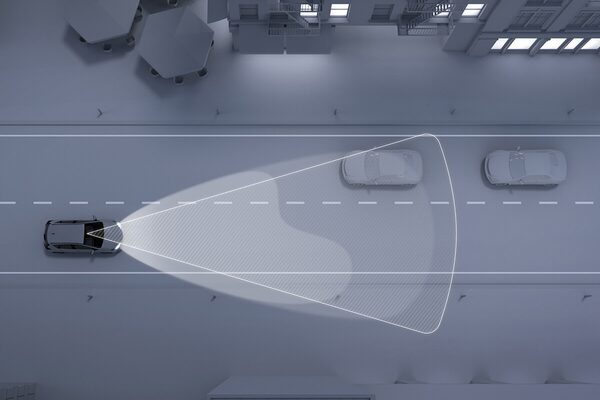
A car’s view. While many drivers pride themselves on their quick reflexes, research has shown automated cars simply do it better.Toyota Canada
Do automated crash avoidance systems really save lives? Would our roads really be safer if our cars were smarter? And, most importantly, what and how is the best way to implement these latest, and high-tech, safety features?
Let’s look at the facts first. Approximately 94,000 people were killed in traffic accidents in
Canada between 1984 and 2013. That works out to more than 3,000 each and every year. In the
United States, that number is close to 33,000 annually. Worldwide, the number of fatalities resulting from vehicle collisions is 1.25 million. The estimated global damage of all these collisions? According to the Canadian Insurance Institute, it’s more than $500-billion.
Now, here’s the real tragedy behind those alarming statistics - most of those accidents were preventable.
The reason why almost all experts agree that the vast preponderance of automotive-related deaths could have been prevented? Because we caused them. Indeed, according to an Insurance
Institute study, Automated Vehicles: Implications for the Insurance Industry in Canada, “Driver error was the primary cause of most of those collisions.”

Better at night. Toyota has developed high-beams which automatically shift, to avoid blinding oncoming traffic.Toyota Canada
The U.S. National Highway Traffic Safety Administration (NHTSA) offers an even starker view, with its National Motor Vehicle Crash Causation Survey (NMVCCS) of accidents finding that driver error was the cause of 94 per cent of the crashes. Just 2 per cent was due to vehicle component failure, the same number as was attributed to the environment - slick roads, weather, etc. Yes, as it turns out, the vast preponderance of collisions - fatal or otherwise - are caused by good, old-fashioned human error.
According to another comprehensive study - A Tri-Level Study of the Causes of Traffic Accidents - the major human direct causes of all these accidents were improper lookout, internal distraction, inattention and improper evasive action. What makes this study more poignant is that it was published in 1979 before cellphones and automated vehicles were even dreamed about and yet, save for excessive speed (still a human decision) and improper evasive action (the promise of the future’s fully autonomous cars), all the factors causing the vast majority of recorded crashes would be avoidable (or at least mitigated) by modern advanced driver-assistance systems (ADAS). Indeed, the main benefit of modern driver-assistance technologies is in augmenting the driver’s awareness of all the dangers around him or her.

Full stop. As our worlds become more distracting, automated braking systems are taking on the role of constant copilot. Shown, an example of braking assist and a fully automated stop.Toyota Canada
Thus do pre-collision warning systems use cameras and/or radar to detect vehicles ahead, first providing a visual warning that a collision may be imminent and then, if no action is taken, automatically apply the brakes helping to minimize the likelihood of a frontal collision or at least reduce its severity. That same need to alert the driver is why lane departure warning systems alert the driver that they are about to cross a lane marking line without signalling and why even more advanced systems will even steer your vehicle back into its proper lane automatically. The most advanced systems can even take the proper evasive action so crucial to automotive safety. For instance, modern radar-guided cruise control systems are able to not only detect a car ahead, but automatically adjust your car’s speed to maintain a preset distance to the vehicle in front. According to the Reported Road Casualties Great Britain, just those driver assistance technologies would have been enough to eliminate, or mitigate, about 56 per cent of the accidents in the UK in 2015 and 70 per cent of accidents of all kinds.
It’s also why the Insurance Institute for Highway Safety (IIHS) - the most influential organization in the research of automobile safety - places as much emphasis on “crash avoidance technologies” as it does its highly regarded crash testing. Indeed, the IIHS considers “front crash protection” systems so essential to the future of automotive safety that they are now a requirement to get the institute’s coveted five-star rating. If front crash protection system is optional, IIHS will qualify its rating with the condition that its endorsement “applies only to optional front crash prevention models.” Indeed, so effective are these systems that “even in the cases where these systems failed to prevent a crash, if there’s automatic braking going on, or if the driver does brake in response to a warning, that crash is going to be less severe than it would have been otherwise,” says David Zuby, IIHS chief research officer.
The sooner such automated crash avoidance systems become standard equipment on all automobiles, the sooner we’ll be able to eliminate driver error as a major cause of road fatalities.
Advertising feature produced by Globe Content Studio. The Globe’s editorial department was not involved.